One Piece vs Two Piece Toilets – Which One Is Better?
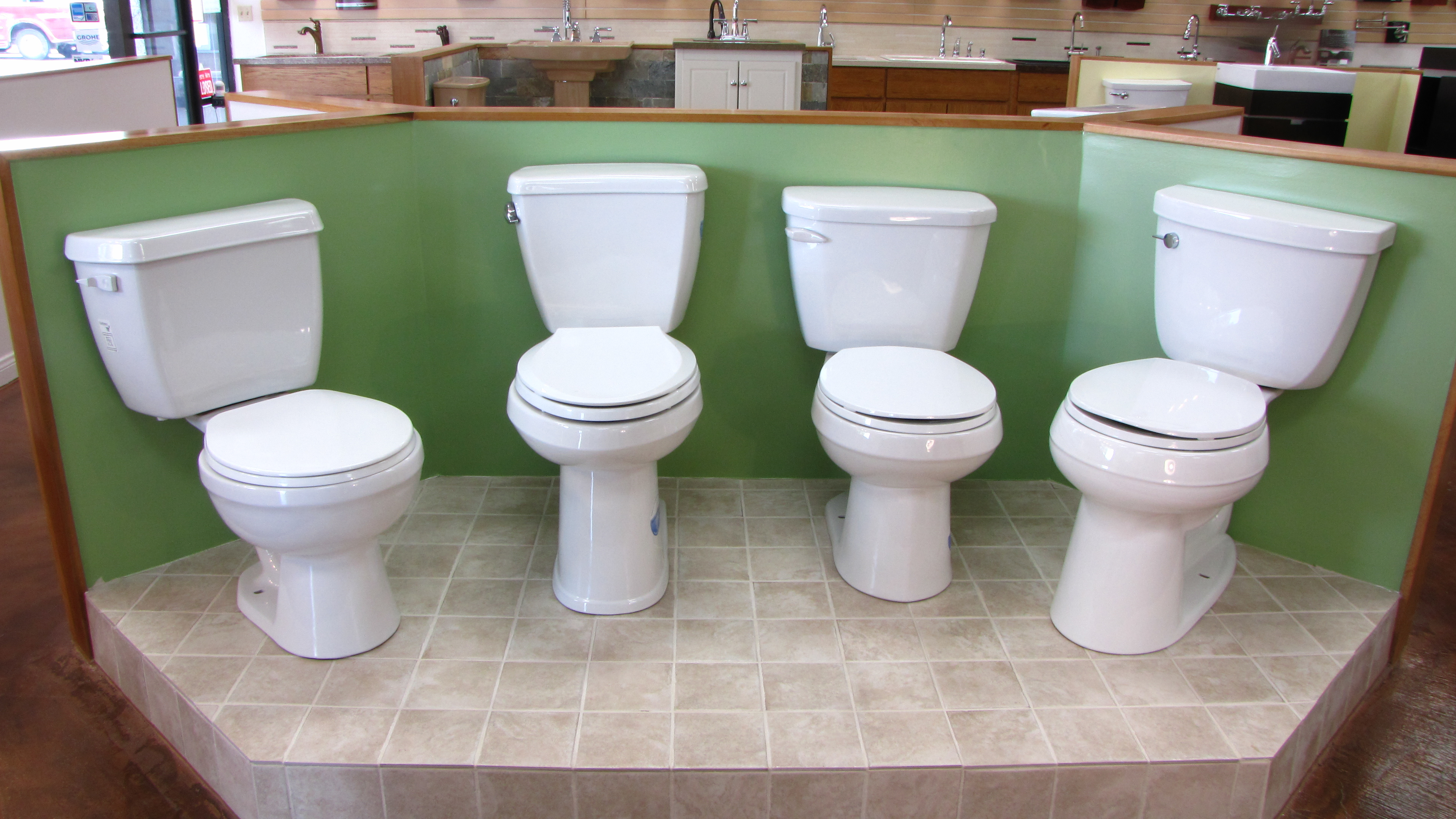
Whether your old leaky toilet needs replacing or you are in the middle of a bathroom remodel, choosing the right toilet is of crucial importance. Toilets come in different styles, sizes, and shapes.
When choosing between two-piece and one-piece toilets, you need to have a clear understanding of how they work. Every water closet consists of 3 main parts: a tank, bowl, and pedestal.
The pedestal ensures that the toilet has the optimal height. The tank stores a certain amount of water while providing the necessary flushing power to keep the bowl clean.
In addition to collecting the waste, toilet bowl ensures that the waste finds its way into the drain pipeline.
When it comes to traditional one-piece toilets (also referred to as single piece toilets), the tank and bowl are fused together with no joints.
Two-piece toilets (also called coupled or double piece toilets) feature the construction where the tank and bowl come separately; they can be joined with fittings.
Both toilet options function well. Their performance level is much the same, and manufacturers offer the same or very similar designs in their one-piece and two-piece models. So, which toilet are you going to choose?
Your choice will depend on your budget, personal preferences, and your individual needs. We are here to help you make the right decision. Here is everything you need to know about one-piece and two-piece toilets.
To help you pick the right toilet for your bathroom, we will outline the principal differences between one- and two-piece toilets.
The idea is to compare these two types in regard to the decisive factors, such as appearance, performance, installation, maintenance, price, and so on. So, let’s dive in!
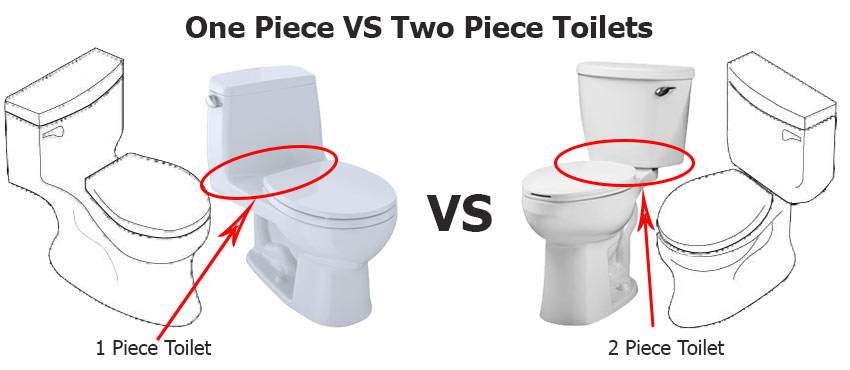
Essentially, there’s no significant difference between one-piece and two-piece toilets in terms of functionality and performance.
That’s because they both have almost identical efficiency and power. The functionality of both toilets depends on toilet design and flushing mechanism.
This should not come as a surprise given that most of the features and interior parts are identical. It is especially true for toilets from the same manufacturer.
Whether you prefer water-saving or comfort height, you can find these features in both 1-piece and 2-piece toilets. From tower flushing to flapper flushing technologies, they both come with various flushing systems.
So, whether it is a single piece or coupled toilet, be sure to check functionality and performance with each model.
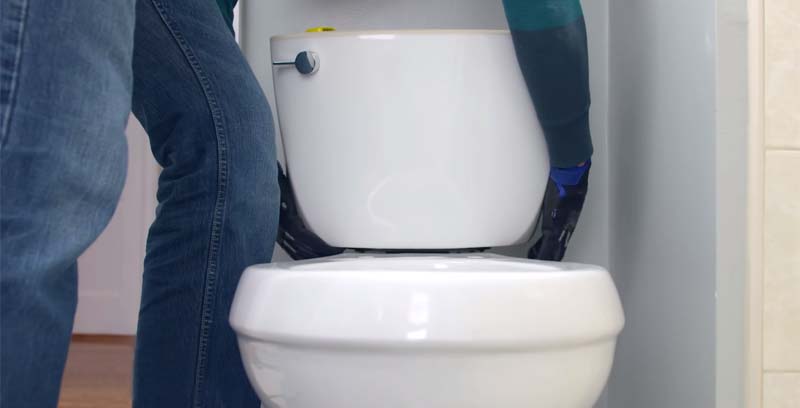 As far as the installation is concerned, both two-piece and one-piece toilets have their own benefits.
As far as the installation is concerned, both two-piece and one-piece toilets have their own benefits.
While the installation is very similar for both types with regard to difficulty, it takes less time to install a one-piece toilet.
However, you may have a hard time getting it in the right position. Maneuvering and moving a one-piece toilet into position takes some practice and effort, particularly if you do it by yourself. So it’s best to choose a two-piece option if you plan to install the toilet on your own.
Instead of moving one bulky and heavy unit, you will carry two lightweight and small pieces. This will make it easier for you to move and maneuver your toilet.
Bear in mind that two-piece toilets involve second installation process, as it is necessary to bolt together two components. Aside from this, you must be very careful when assembling the tank in a 2-piece toilet so as not to break the porcelain.
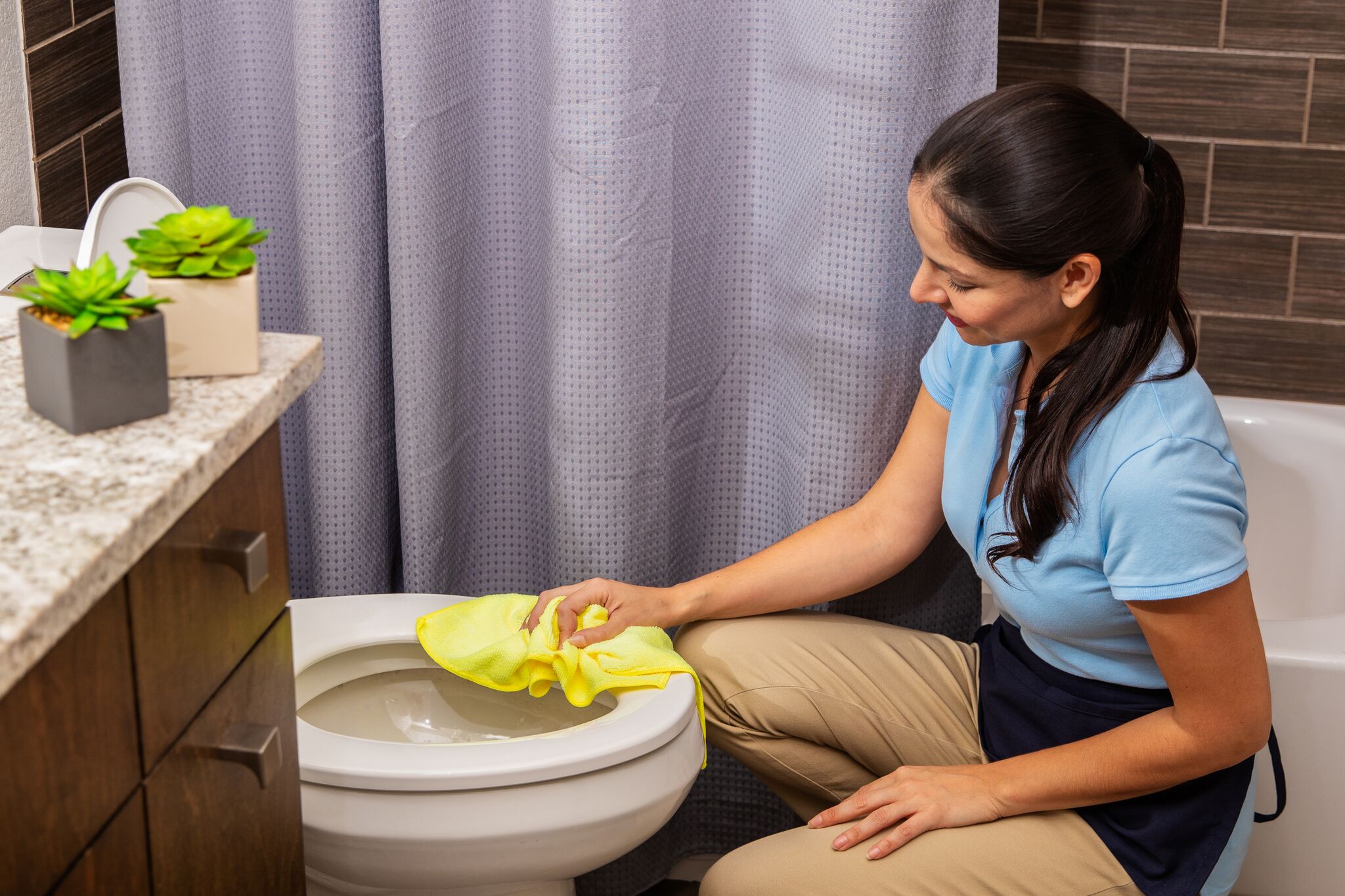 You want to keep your toilet clean with little effort and low maintenance.
You want to keep your toilet clean with little effort and low maintenance.
That’s why many people choose one-piece over the two-piece toilet. It’s easier to clean as there’s no joints or gaps between the bowl and tank.
Single piece toilets feature skirted bowl with the smooth and flat exterior surface. The molded design with no grooves or nooks means less space for dirt and grime to get trapped. At the same time, it prevents bacteria and mold from growing and spreading.
All of this makes one-piece toilets much more hygienic and easier to maintain. Two-piece toilets have more hard-to-reach areas, so they are harder to clean. The joint area is particularly favorable for dirt and germs to collect up and grow.
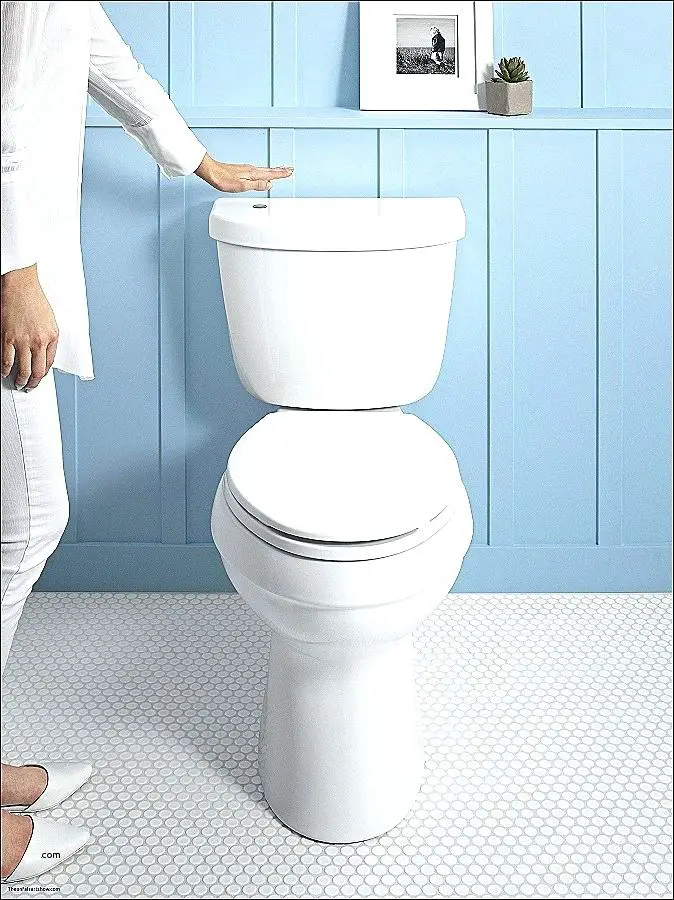 Both two-piece and one-piece and toilets come in many different sizes.
Both two-piece and one-piece and toilets come in many different sizes.
Generally speaking, single-piece models take up less space thanks to their design. They do not occupy too much space, as the bowl and tank are molded together.
Most 1-piece toilets feature comfort height, meaning the bowl is sitting at 17″ (not at 15 inches).
Two-piece toilets, on the other hand, are available in both comfort and standard height to accommodate different bathrooms.
When purchasing a toilet, take the time to check the rough-in. This measurement refers to the distance from the finished wall behind the toilet to the center of the waste outlet or the drain pipe. Most toilets have a 12-inch rough, but you can also find models sitting at 10 or 14 inches.
Double piece toilets have more options regarding rough because they are differently sized to suit different bathrooms. Due to the fact that the bowl size does not change, you will be able to buy a different tank according to your needs.
Single piece toilets tend to be heavier since everything comes in one mold. With a two-piece toilet, you will have the possibility to uncouple the toilet components, thereby reducing its weight. This will make it easier for you to transport, carry, and move the toilet.
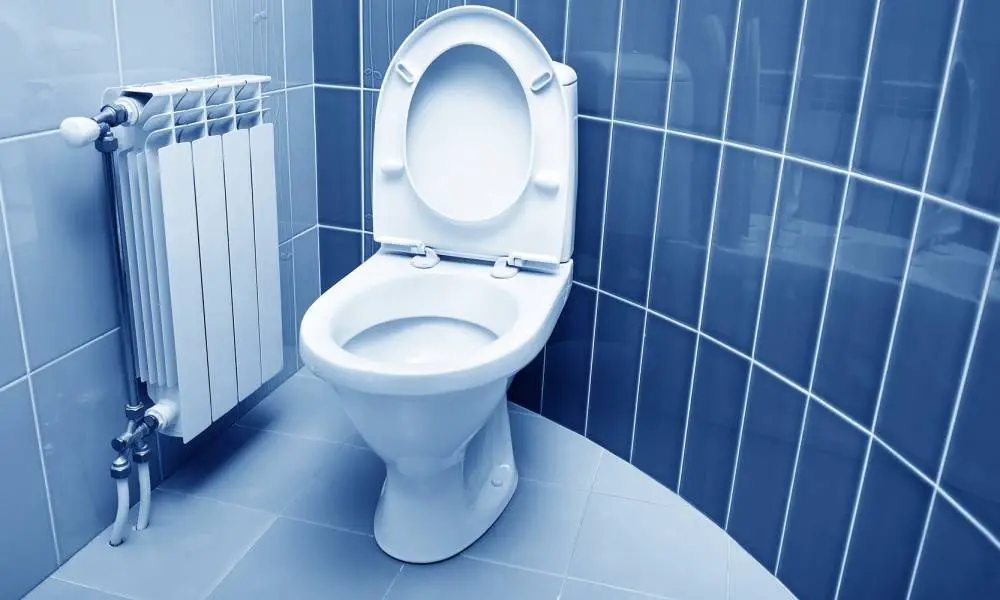 Single piece toilets are designed as one big piece of bathroom fixture, so there’s no joining part to upkeep.
Single piece toilets are designed as one big piece of bathroom fixture, so there’s no joining part to upkeep.
This makes them more reliable and tougher. Besides, you will not have to worry about leaking.
The two-piece toilets, on the other hand, require extra care given that the coupling between the bowl and tank may crack over time. Once these two pieces uncouple, you will have to replace one or even both parts at once.
And this is not the only problem. The rubber gasket in old two-piece toilets which connects two sections tends to degrade after a few years. This can cause leaks.
Nonetheless, either type of toilet is capable of lasting for many years with proper usage and maintenance. As a matter of fact, they can both last more than 40 years without needing replacement.
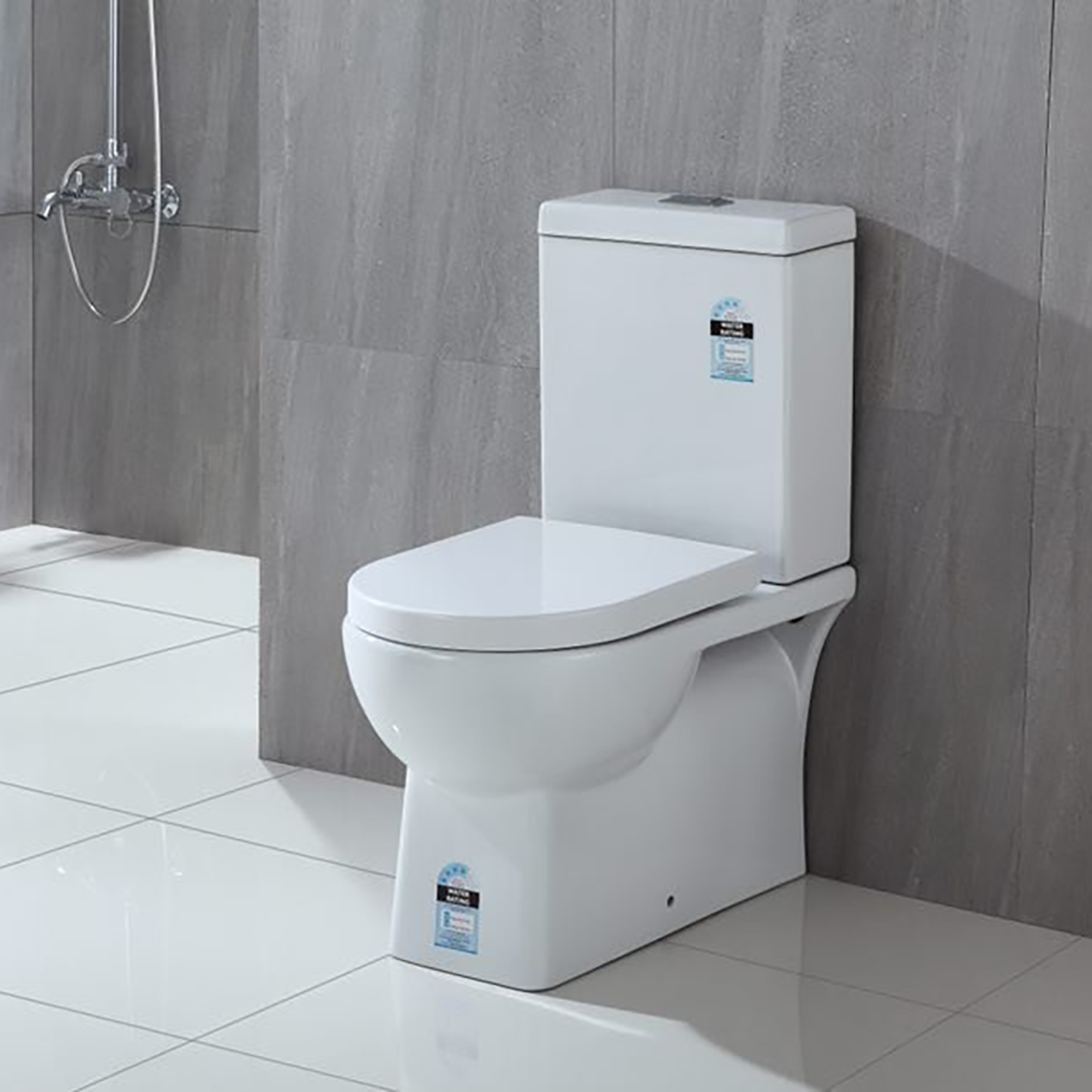 Both 1- and 2-piece toilets come in a broad range of shapes and styles.
Both 1- and 2-piece toilets come in a broad range of shapes and styles.
Even though they are both available in many attractive designs, one-piece toilets are a clear winner when it comes to aesthetic look.
It’s one of the reasons why many people opt for a single piece toilet.
The continuous, seamless design with no gap or joint between the body and tank is what makes one-piece toilets look stylish.
Additionally, a skirted bowl of a one-piece toilet makes it look elegant and contemporary. It will add a luxury appearance and modern touch to your bathroom.
The two-piece toilet is a cheaper option to go with. In general, single-piece toilets cost less than their two-piece counterparts even with the same style and manufacturer.
That’s because the seamless design requires a greater amount of resources and involves a complex production process.
In addition to higher production cost, one-piece toilets also come with higher shipping cost due to the fact that they are a bit heavier. So, if you are looking for a budget-friendly option, go for two-piece toilets.
Most two-piece toilets cost around $300 to $500, while the price of one-piece toilets ranges from $400 to more than $1000 for high-end models. Evidently, most shoppers can afford to buy one-piece models.
It is important to point out that both one- and two-piece toilets have their own advantages and drawbacks.
Before making up your mind, you should get familiar with the pros and cons of both types.
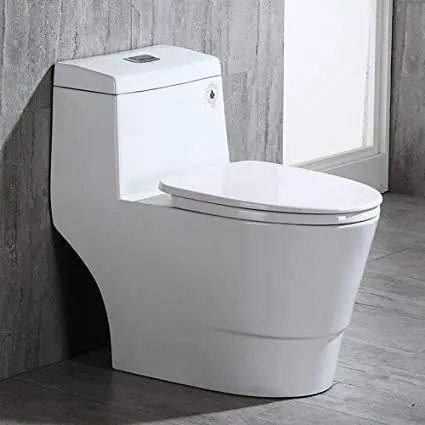 Water-saving and flushing options
Water-saving and flushing options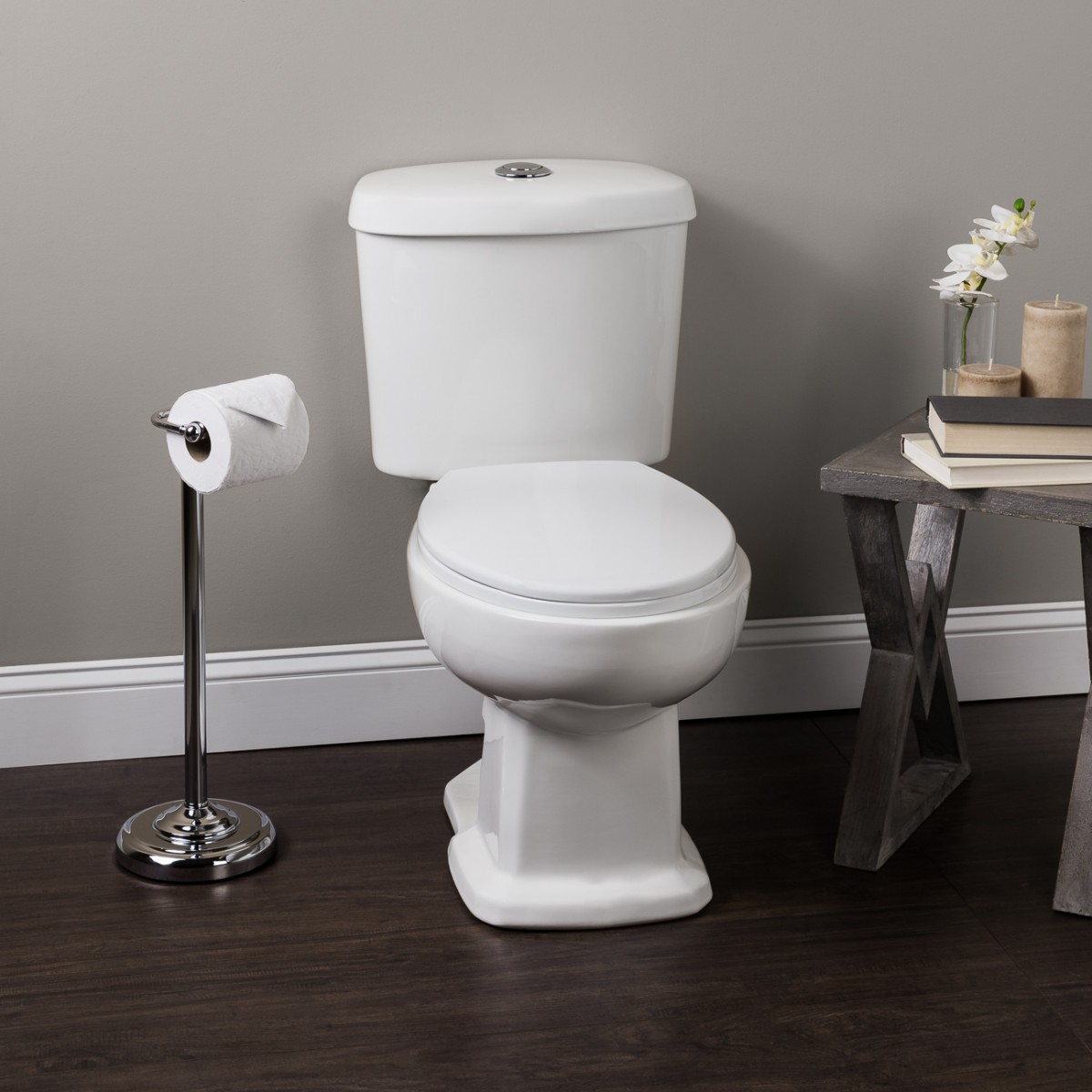
Now that we have examined all the factors you should consider when purchasing a toilet, it’s time to see the bottom line.
We’ve compared the key differences between two-piece and one-piece toilets to help you with your purchasing decision.
Which is the right toilet for most people usually boils down to their individual requirements, personal preferences, and available budget.
If you are in pursuit of an easy to clean, stylish, and durable fixture, a single piece toilet is worth the extra money.
We hope you have a better idea of which type works better for you. It should be noted that neither design has a great influence on the home’s value. Regardless of style or type, it is imperative to have a toilet that works well.
Comments are closed.
Thank you for the review. Very informative. However, every reviewer I have looked into forgot to show the difference in bowl size between a one piece and two piece toilet. For example, what is the bown size of a one piece versus that of a two piece elongated toilet bowl? Are they same or different? Does also a one piece toilet comes into two various shapes of rounded and elongated shape? To my understanding, this is the critical information piece that every reviewer is either forgetting or overlooking as if they are not important to the shoppers like me.